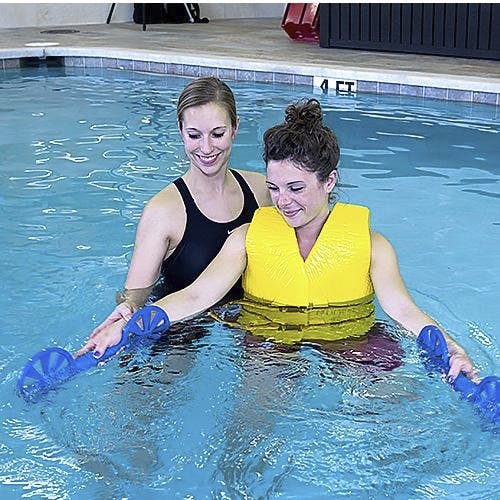Aquatic physical therapy is a type of rehabilitation that takes place in water. It’s often used to help people recover from injuries, surgeries, and other conditions that limit their mobility.
The water provides resistance that can help strengthen muscles, and the buoyancy can take pressure off of joints and bones. Aquatic therapy can also help improve range of motion, flexibility, and cardiovascular fitness.
There are many different types of exercises that can be done in aquatic therapy, and a therapist will work with you to create a personalized program.
Aquatic therapy can be done in a pool, hot tub, or even a lake or ocean:
If you’re interested in trying aquatic therapy, talk to your doctor or physical therapist to see if it’s right for you.
Physical therapy in a pool allows patients to receive the benefits provided by land-based therapy, with the added bonus of water resistance. Water’s hydrostatic pressure assists in decreasing swelling, while the temperature-controlled environment can help reduce pain.

Aquatic therapy is often used to treat:
- Arthritis: The water’s warmth can help reduce pain and stiffness associated with arthritis.
- Back pain: The water can provide support for the spine, which may help relieve back pain.
- Chronic pain: The buoyancy of the water can help take pressure off of joints and muscles, which may help reduce pain.
- Depression: Exercise has been shown to be an effective treatment for depression, and being in the water can be especially calming.
- Fatigue: The water’s resistance can help build muscle strength, which may help reduce fatigue.
- Fibromyalgia: The water can help reduce pain and stiffness associated with fibromyalgia.
- Injuries: Aquatic therapy can help rehabilitate injuries such as Achilles tendonitis, knee injuries, and shoulder injuries.
- Joint replacement: The water can provide support for joints while they heal after surgery.
- Multiple sclerosis: The water’s resistance can help build muscle strength, which may help reduce fatigue and improve mobility in people with multiple sclerosis.
- Neurological conditions: The water can provide support and stability, which may help improve balance and coordination in people with neurological conditions such as Parkinson’s disease.
- Obesity: The water’s resistance can help build muscle and improve cardiovascular fitness, which may help with weight loss.
- Orthopedic conditions: Aquatic therapy can help rehabilitate orthopedic conditions such as hip replacements, knee replacements, and spinal fusion surgery.
- Pain: The water’s warmth can help reduce pain.
- Pregnancy: The water can provide support for the extra weight of pregnancy, which may help reduce pain and improve mobility.
- Stroke: Aquatic therapy can help with rehabilitation after a stroke. The water’s resistance can help build muscle strength and improve cardiovascular fitness.
Aquatic therapy can also be used to improve:
- Cardiovascular fitness
- Flexibility
- Muscle strength
- Range of motion
Aquatic therapy is often used in combination with other types of physical therapy, such as land-based exercises and stretching. Your therapist will develop a personalized treatment plan based on your needs and goals.

Conclusion:
Aquatic therapy can be an effective treatment for a variety of conditions. It can help reduce pain, improve range of motion, and increase muscle strength.
If you’re interested in trying aquatic therapy, Austin Physical Therapy Specialists Texas are best in providing physical therapies.
They offer personalized one- on -one aquatic therapy treatment for each patient by their licensed physical therapists.
For more information, please visit APTS website to schedule an appointment.
Thank you!!
